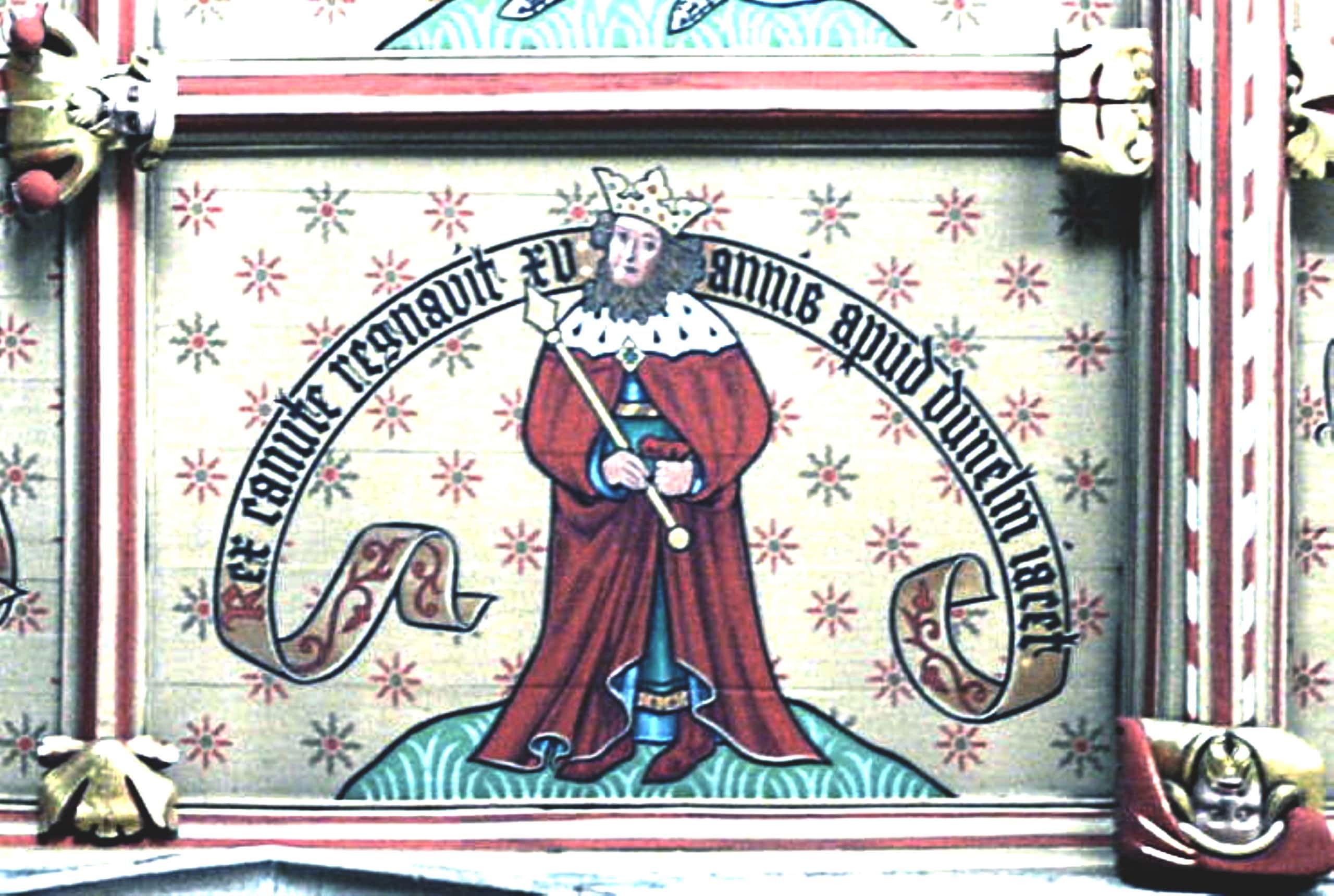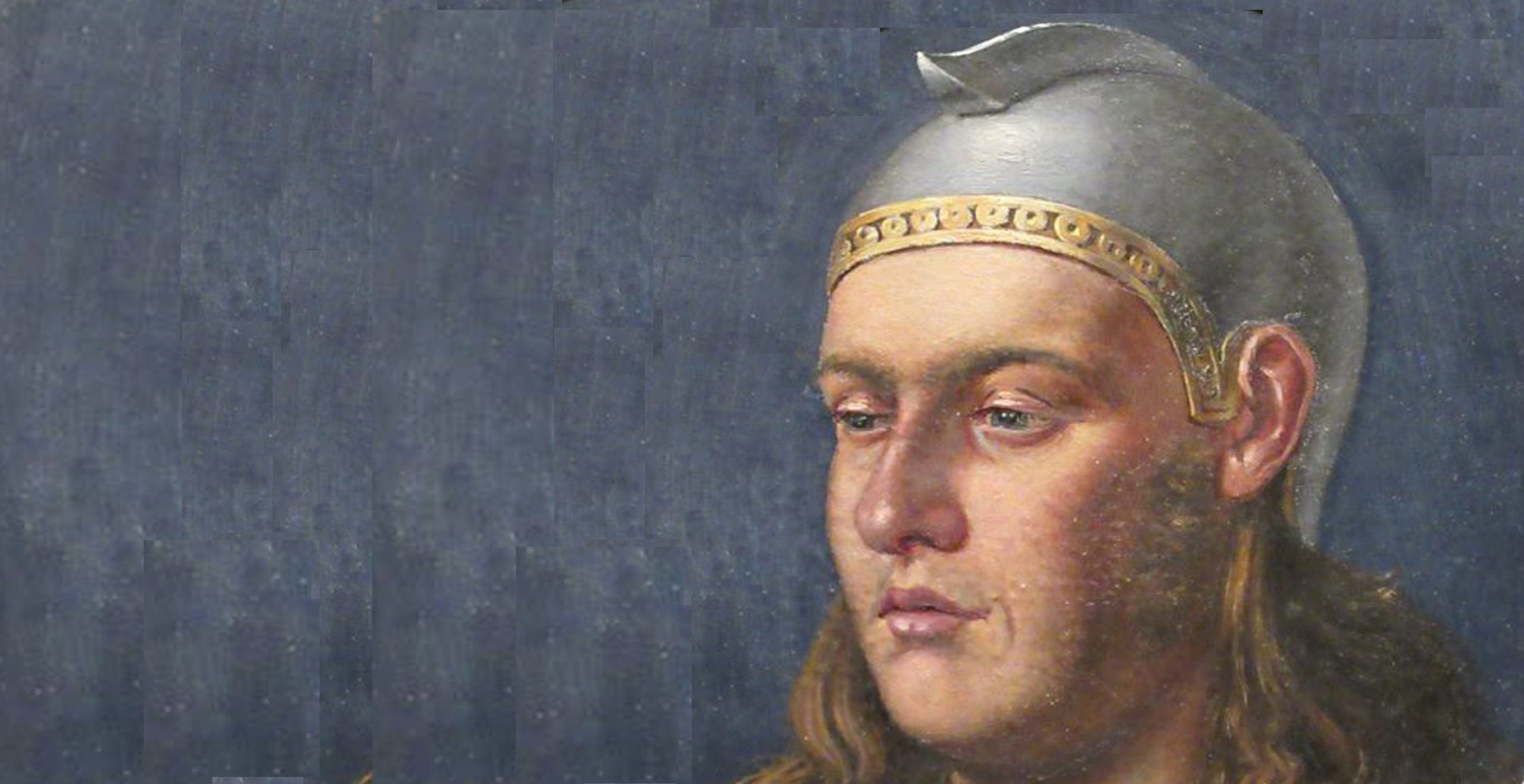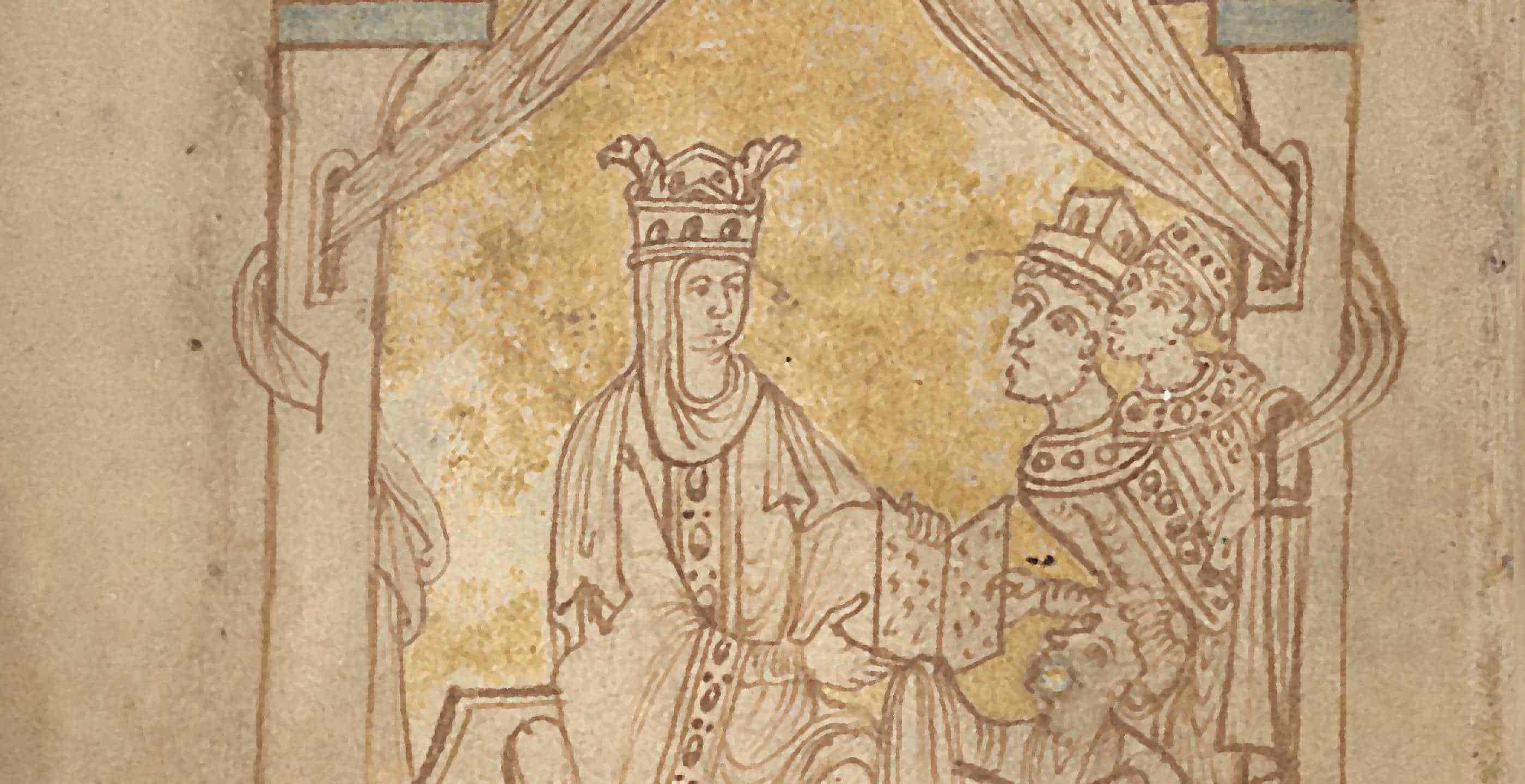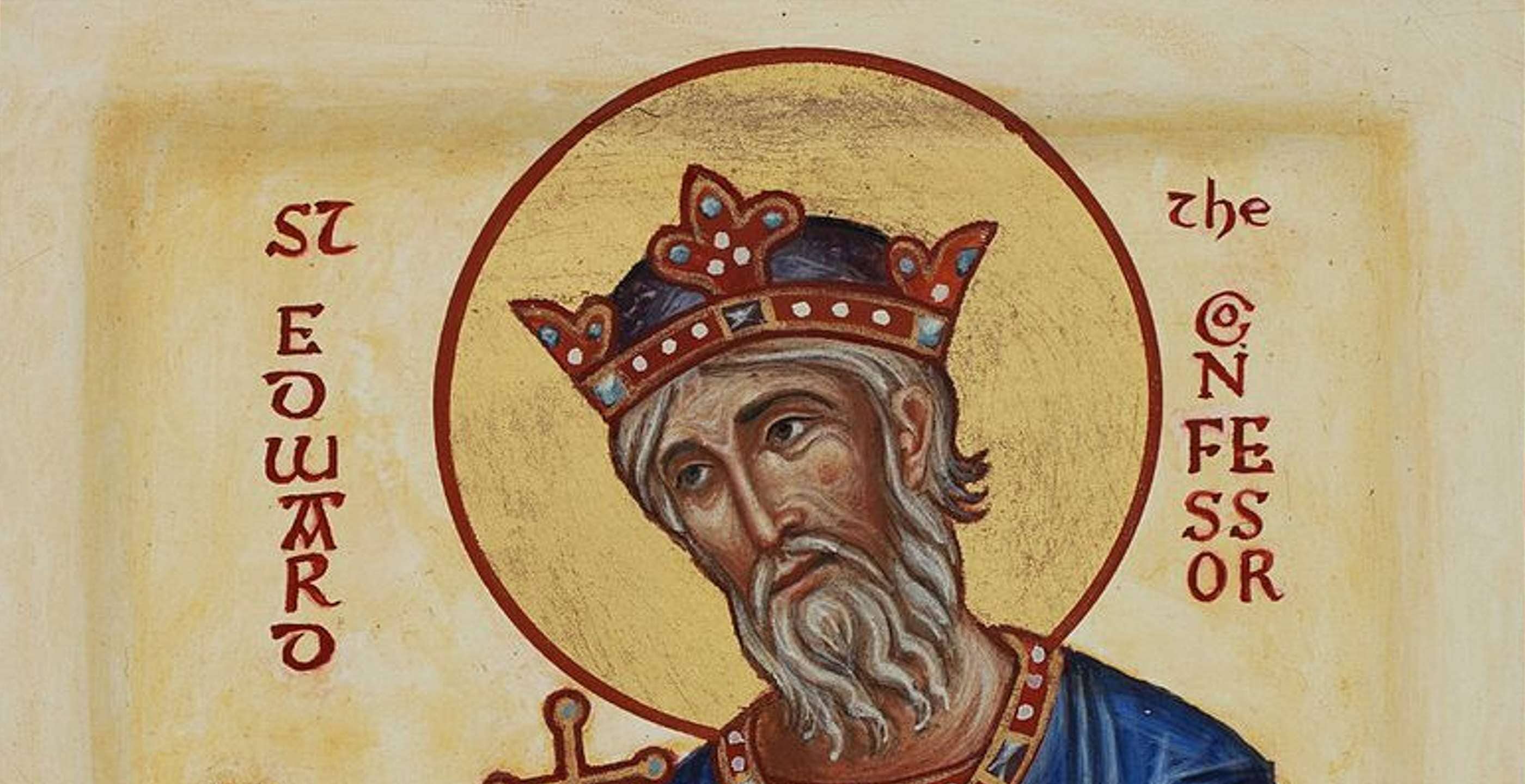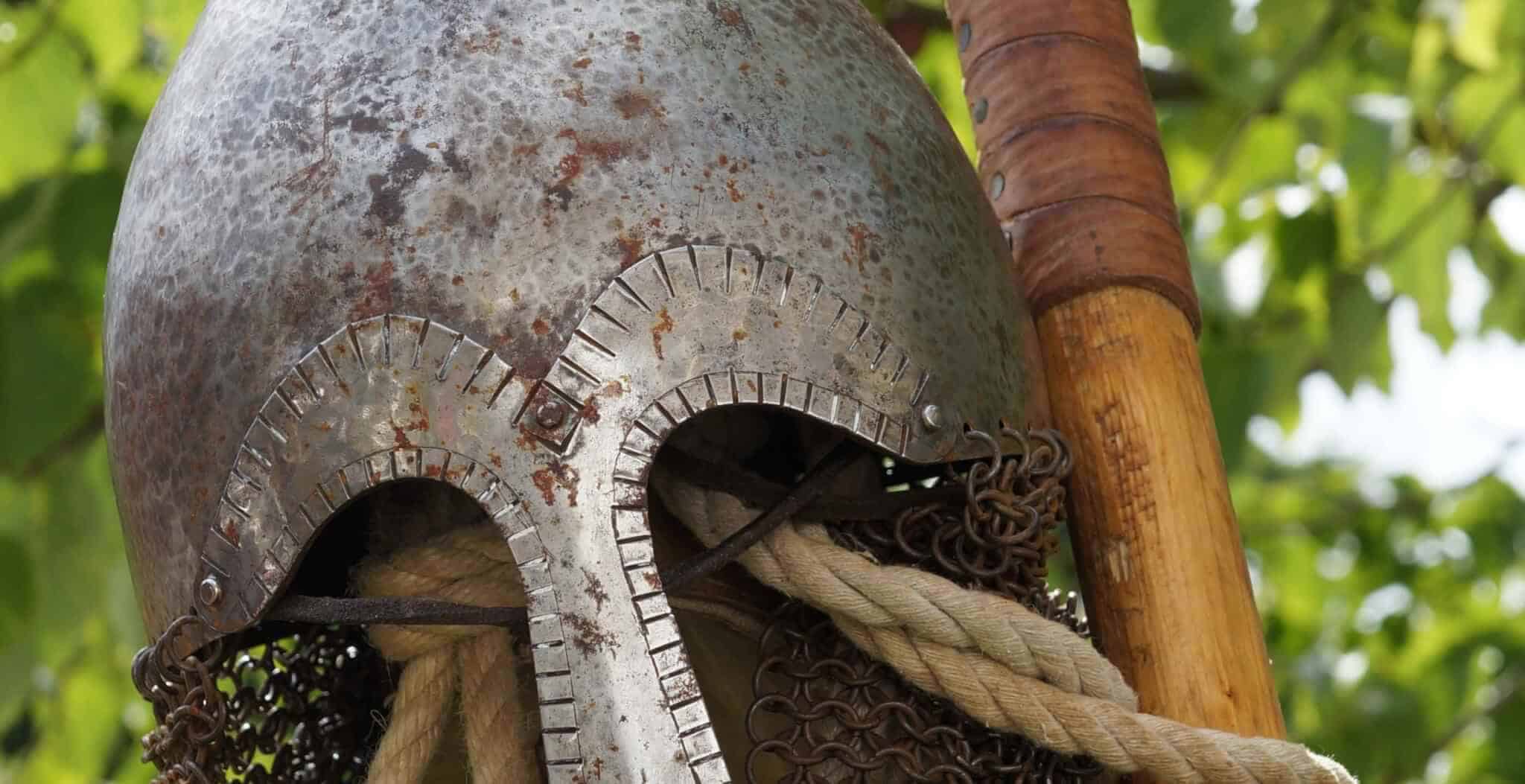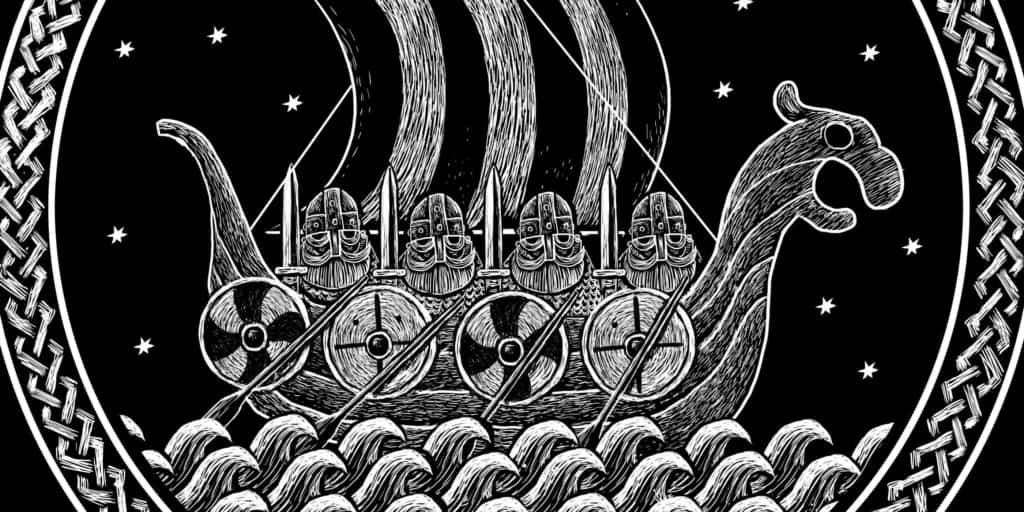As ruler of England, Denmark and Norway, King Cnut the Great consolidated his power to become leader of the North Sea Empire, demonstrating his leadership skills and fortitude during his reign.
The fable about King Cnut trying to command the tide of the sea, written 100 years after his death by Henry of Huntingdon, still remains entrenched in English folklore today.
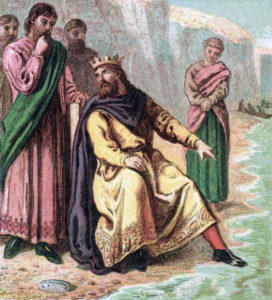
Whilst the exact date of his birth is unknown, Cnut was the son of Sweyn Forkbeard, King of Denmark and a Polish princess.
Cnut was the product of a long line of Scandinavian leaders as his father Sweyn Forkbeard, was the son and heir to King Harald Bluetooth.
Cnut’s destiny to follow in his father’s footsteps seemed inevitable and he soon grew up to become an impressive Viking warrior, described as good-looking and possessing strong leadership skills.
With Viking power growing from strength to strength, Sweyn Forkbeard began to look further afield to expand his powerbase. After setting his sights on England, he targeted the Saxon king, Aethelred the Unready and with the support of his son, Cnut, successfully took the English throne.
Having usurped the English king, Sweyn’s leadership was sadly to be short-lived as he died on 3rd February 1014 creating a power vacuum which Aethelred felt determined to fill when he returned from his exile in Normandy.
This created a divided kingdom in England, with some factions supporting Aethelred’s return whilst others swore their allegiance to Cnut.
On this occasion, Aethelred was able to garner enough support from the higher echelons of Anglo-Saxon society and pledged on his return to rule more justly and forgive those who had submitted during the time of Viking domination.
Without further ado, Aethelred launched his attack, confident in the fact that he had the necessary support to reclaim his throne.
At this time, Cnut realised the necessity for more time and manpower and left England to develop an effective resistance before returning once more.
In the meantime, Aethelred launched his assault and ravaged the Danelaw, in the process dealing a huge blow to the Kingdom of Lindsey for supporting the Vikings.
Meanwhile, back in Denmark Cnut was making his preparations to invade.
In the summer of 1015, he made his comeback.
With renewed strength bolstered by his forces of almost 10,000 men, many of them mercenaries, Cnut returned to England and successfully conquered the country.
After fourteen months of warfare and despite the strong resistance from Edmund Ironside, Aethelred’s son, Cnut’s victory was sealed.
On 23rd April 1016, Aethelred passed away leaving Edmund Ironside king. However Cnut had other ideas and was bolstered by his support from the Witan.
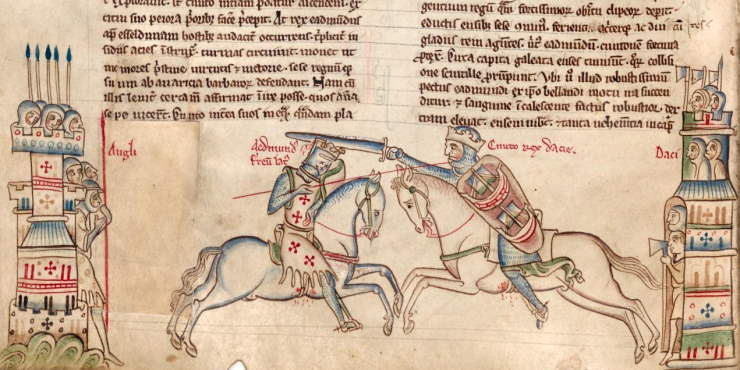
Such power struggles were soon to be resolved in a series of military engagements culminating at the Battle of Assandun where Edmund was defeated and a treaty subsequently negotiated. As part of this peace agreement, the country would be partitioned with Edmund retaining control of Wessex whilst Cnut had the rest of England. Such a proposal would be upheld until the death of one of the parties, at which time, the survivor would receive control of all of the lands.
As it soon materialised, Cnut did not have long to wait as Edmund died on 30th November 1016, leaving Cnut has ruler of all England.
By the end of the year he had become King Cnut and the coronation proceeded at Christmas.
Cnut now with the English Crown in his possession, embarked on a marriage which would consolidate power even further by marrying Emma of Normandy, Aethelred’s widow.
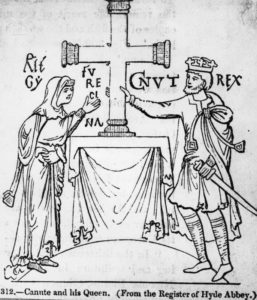
In 1017, he married Emma and quickly went on to have two children, Harthacnut and a daughter called Gunhilda.
In the process and to further entrench his sovereignty he also had Eadwig Atheling, Aethelred’s son killed, thereby eliminating further threats to the crown.
Meanwhile, Harthacnut would be chosen as his heir apparent, despite Cnut having older sons from previous relationships that were entitled to inherit. Moreover, Emma’s sons by Aethelred, Alfred Atheling and Edward the Confessor, would be forced into exile, as were Edmund Ironside’s sons.
With potential claimants to the throne temporarily dealt with, Cnut went about maintaining his military infrastructure which included keeping forty ships and their crew to support the English defences whilst also extracting a huge amount of gold from England in order to pay off his army who returned to Denmark.
Now as King of England, it was important for Cnut as a Viking king to create stability and a unifying presence in the view of so much potential division. Thus, he held a meeting in Oxford where it was agreed that the English and Danish would live together in peace under the governing laws of King Edgar.
Cnut, having only recently consolidated his power in England, very quickly turned his attention back to Denmark where in 1018 King Harald III passed away, leaving Cnut to claim the Danish throne for himself.
In order to entrench his kingship further, he made Harthacnut Crown Prince of Denmark whilst Ulf Jarl acted as regent.
By 1028, his control had extended even further as he now became King of Norway too, thus presiding over an extensive North Sea Empire.
As part of his kingship he also promoted Christianity throughout his kingdoms following his own conversion to the faith. He was the first Viking leader to be acknowledged by the Pope as a Christian king and in 1027 embarked on a pilgrimage to Rome, demonstrating his faith and piety.
On his return from Rome, after witnessing the coronation of the Holy Roman Emperor, Cnut referred to himself as “King of all England and Denmark and the Norwegians and some of the Swedes”. Such was his power and governance over much of northwest Europe, that Cnut brought a level of unity and stability between his kingdoms.
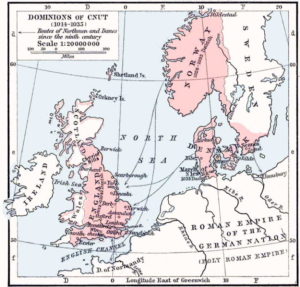
In terms of administration, Cnut chose Wessex as the seat of government whilst the area of East Anglia was ruled by a deputy.
Another important figure in the balance of power was the devious character of Eadric Streona who had plundered much of the country and fought in decisive battles on behalf of Cnut. His loyalty to the cause was at this time acknowledged by Cnut who awarded him the title of Earl of Mercia. Such a reward however was not viewed as sufficiently substantial by Eadric and he soon was embroiled in conflict with Cnut.
Eadric claimed to have served a much more significant part in Cnut’s victory as his decision to betray Edmund Ironside had in fact secured Cnut’s victory. In response to Eadric’s claims, Cnut acknowledged that his betrayal of Edmund could very well be replicated with him and thus his protestations with the king left Cnut with no choice but to have him killed. His body was thrown into the Thames and his head placed on a spike at London Bridge.
Whilst Cnut dealt with threats to his kingship in England with a forceful nature, exiling or in some cases killing his rivals, in time, Cnut established a more stable form of governance which allowed the Saxon and Viking communities to co-exist in both a social and political domain. For this reason, as King of England he was thought of in a positive light, an image which was assisted by his closer ties to the Church, the introduction of the Laws of King Edgar and his policies designed to strengthen the currency.
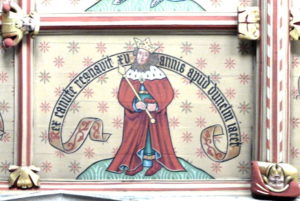
These measures, combined with the inclusion of Saxons and Vikings within his royal court would strengthen his popularity and thereby secure his kingship.
During his reign as King of England, as well as Denmark and Norway, Cnut had succeeded in the mission which his father had endeavoured to achieve, to rule over a vast North Sea Empire, united by his governance.
When he passed away on 12th November 1035, Cnut left behind a significant responsibility to his son Harthacnut. Not only to rule over Scandinavia but to maintain control of England too. Only time would tell whether any of his offspring could follow in his footsteps.
Jessica Brain is a freelance writer specialising in history. Based in Kent and a lover of all things historical.
Published: 20 July 2022
